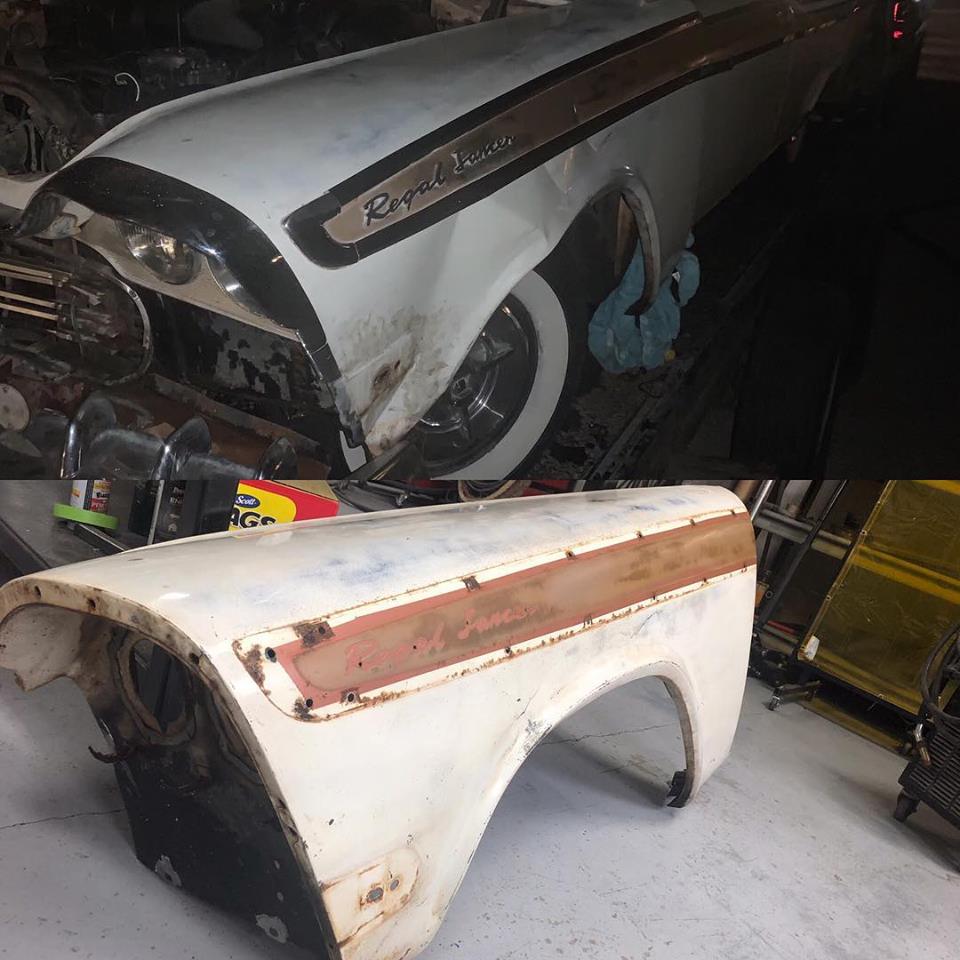Two Important Aspects of Custom Metal Finishing to Understand

It's not always the four-legged deer you have to worry about hitting out in Texas. A couple of weeks ago, a customer brought in a 1958 Dodge fender that got smashed in by the mechanical kind of Deere. For the owner of the '58 Dodge, returning the fender back to its proper shape meant not just straightening it, but also having it done with care so as to preserve the stellar patina his classic car had earned over the years. Our rockstar fabricator, painter, and custom metal finishing expert Brandon Barker did just that as you can see in these before and after Facebook photos of the collision repair job.
The Basics of Custom Metal Finishing
Custom metal finishing is a special type of repair job--more of a repair art--that focuses on restoring damaged metal to a previous, often pre-collision condition. Here, great craftsmen use as little filler material as possible to keep a flawless and strengthened finish. In some ways, custom metal finishing is becoming a lost art as modern cars boast thinner metals and composites that aren't as easily refashioned as the older steel and aluminum panels pre-21st-century vehicles were made of. But here at Customs & Hot Rods of Andice, rare and classic cars and hot rods are the vehicles we love working on and thus, dying art or not, custom metal finishing is one of our favorite tasks.
Two of the most important aspects of great custom metal finishing work involve:
- Knowing where to begin. There are two types of damages that result from a collision: direct and indirect. Direct damages are at the point of impact while indirect damages cover a wider area and were caused like a rippling effect out from the point of impact. With custom metal finishing and repair, we start with the direct damage and in some cases, fixing this first can lead to areas with indirect damage to simultaneously returning to their original position.
- Understanding the memory of metal. Metal has a sort of memory in that once it's been formed, it will remember that original form so long as it has not been damaged and bent past its elastic point. In other words, just as a tree can be blown pretty far over in a storm and will still return to its original shape, metal can be bent pretty far and will still want to return to its original shape. In cases of light metal work, custom metal finishing experts lightly tap the metal to help get it to return to that original shape. But metal that has been bent past its elastic point can create a new normal and hardened bend that may resist straightening. These are the harder tasks that take more time and patience to complete as the metalworker slowly and expertly reforms the metal without putting on pressure that might weaken it.
Have Dents and Dings in Your Classic Car's Body Panels? Take It to CHRA
If you have ugly dents in your classic car or truck that you're tired of looking at, then bring them to CHRA and let us use our custom metal finishing finesse to get them back to original condition!